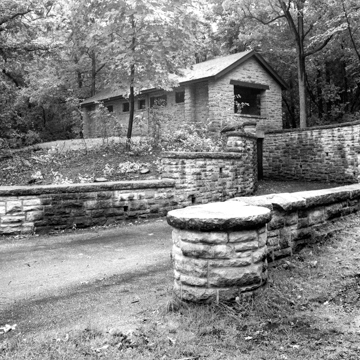At the turn of the twentieth century, Madison became a city of parks and pleasure drives. But the creation of the city’s park system began even earlier. One important private park developer was Edward Owen, a nature lover and professor of French at the University of Wisconsin–Madison. In the summer of 1892, Owen purchased a fourteen-acre strip of woodland on a “commanding height” between the Catholic cemetery and Mineral Point Road. Along this strip, he constructed Owen Parkway, with the assistance of John Olin, known as the father of the Madison park system, and Edward Hammersley, a farmer who owned land along the drive. In 1897, Owen donated the parkway to the Madison Park and Pleasure Drive Association. The original drive ran along what is now Regent Street from its intersection at Speedway Road to Hillcrest Drive and west on Hillcrest to Owen Drive, where it split into routes to Mineral Point Road and University Avenue. It became the first of many parks and pleasure drives on what were then the outskirts of Madison. Owen’s parkway was part of a nationwide City Beautiful movement, which sought to remedy the ills of rapid urbanization and industrialization and provide opportunities to breathe fresh air and commune with domesticated nature.
In the 1930s, the WPA created Hoyt Park, which encompassed the older Owen Parkway. The WPA put unemployed men to work building a gateway designed by local architect Ferdinand Kronenberg, who probably designed the other structures, too. Before the WPA created this park, it was the site of a sandstone quarry that supplied fine-grained, light-buff stone for many of the city’s early buildings. The WPA used the last of it to build the shelters, fireplaces, tables, restrooms, and other structures in the park. The city then closed the quarry and officially designated the land as a park. Flad and Associates designed the structure north of the main shelter in 1959.
Hoyt Park encompasses twenty-six acres, wooded with oak and hickory. The winding road leads to Sunset Point with its panorama of Lake Mendota and, in the evenings, the setting sun.





















